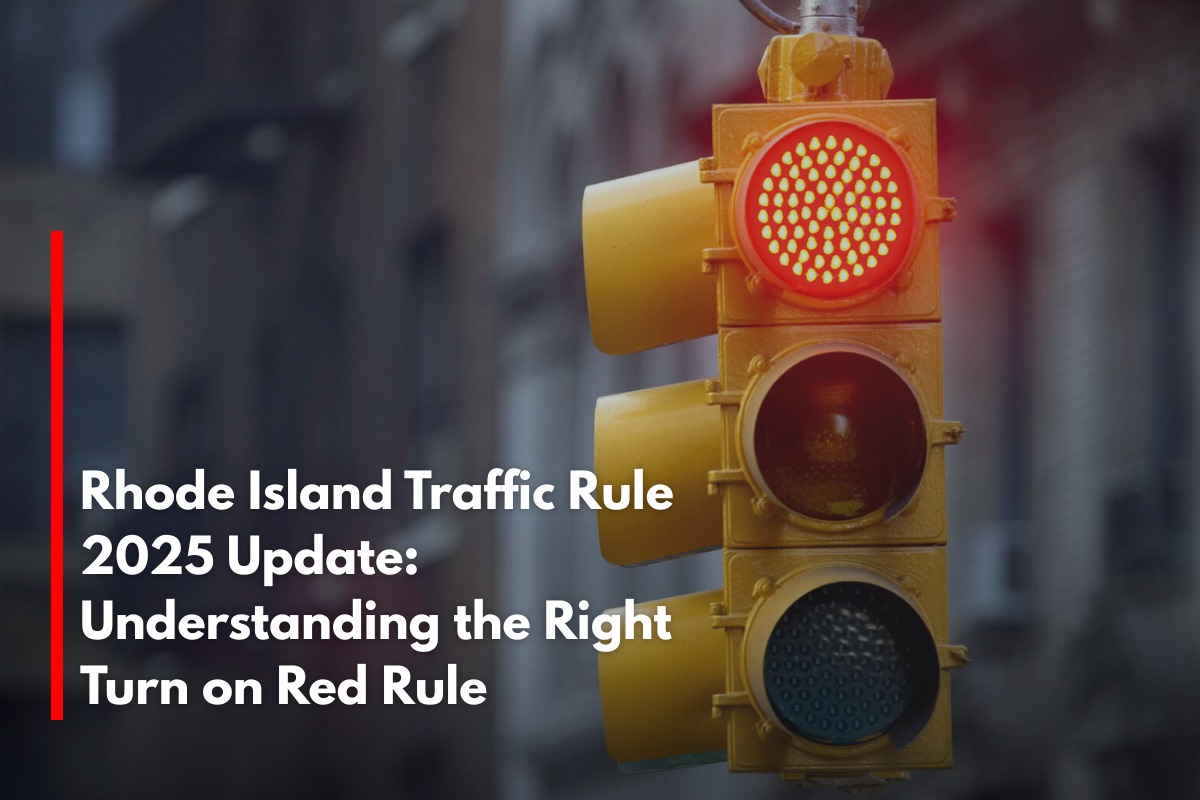Rhode Island continues to adapt its traffic rules to improve safety and traffic flow in 2025. One important aspect many drivers should be aware of is the state’s regulation regarding the right turn on a red light. This article covers the latest updates to Rhode Island’s right turn on red law alongside practical guidance for drivers in the state.
What Is Right Turn on Red?
Right turn on red (RTOR) is a traffic rule that allows drivers to turn right at a red traffic signal after coming to a complete stop, provided it is safe and no sign prohibits the turn. This offers greater efficiency at intersections by letting traffic move even when the light is red for those not turning left or going straight. The rule has been widely adopted across the US with some exceptions.
Right Turn on Red Rule in Rhode Island
In Rhode Island, drivers are permitted—but not required—to turn right on a red light after a full stop, unless a “No Turn on Red” sign is posted at the intersection. Key points include:
Drivers must come to a complete stop at the white stop line, crosswalk, or intersection before turning.
Right turns on red must yield to pedestrians and oncoming traffic with the right of way.
Intersections with specific traffic patterns or pedestrian activity may have signs prohibiting the turn on a red light for safety reasons.
The rule does not apply if a steady red arrow is displayed for right turns—drivers must wait for the green arrow signal.
These measures balance convenience with safety, especially in areas with heavy foot traffic or complex intersections.
Locations Where This Rule Applies
The right turn on red rule applies statewide in Rhode Island but is most relevant in urban and suburban areas such as:
Providence: Busy downtown intersections with heavy pedestrian traffic may have signs limiting turns on red for safety.
Warwick: Suburban traffic corridors where the rule eases congestion but still requires caution.
Cranston and Pawtucket: Areas with mixed residential and commercial zones where pedestrian safety is paramount.
Drivers should always watch for local signage as no-turn-on-red zones are common in the city centers and near schools or crosswalks.
Recent 2025 Updates and Safety Efforts
The Rhode Island Department of Transportation (RIDOT) is focusing on enhancing intersection safety by reviewing traffic flows and increasing signage where needed. The 2025 updates emphasize better public education on the rule, including the requirement to stop completely and yield to pedestrians before turning.
Moreover, Rhode Island is expanding the use of automated speed enforcement in designated safety zones, though this is unrelated to RTOR specifically, it reflects the state’s broader approach to traffic safety.
Tips for Rhode Island Drivers on Right Turn on Red
Always come to a full stop before turning right on red.
Look carefully for pedestrians crossing and yield if present.
Observe all posted signs—“No Turn on Red” signs override the general rule.
In heavy pedestrian areas or downtown districts, consider waiting for a green light if unsure.
Stay alert and patient; the rule allows turning but does not require it.
The right turn on red rule in Rhode Island remains a convenient way to improve traffic flow while prioritizing safety in 2025. Drivers should fully stop, yield to pedestrians and other vehicles, and comply with local signage. Rhode Island’s approach balances efficiency with caution, especially in bustling urban areas with pedestrian presence, helping maintain safe and smooth travel across the state.
Sources
(https://dmv.ri.gov/node/1371)
(https://dmv.ri.gov/node/1231)
(https://webserver.rilegislature.gov/BillText25/HouseText25/H5951.pdf)
(https://internationaldriversassociation.com/blog/right-turn-red-laws-usa/)
(https://en.wikipedia.org/wiki/Turn_on_red)











